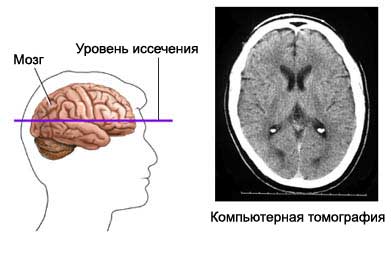Cerebral palsy – Cerebral Palsy
Description of cerebral palsy
Cerebral palsy (Cerebral Palsy) It represents a group of chronic diseases, which affect the ability to drive traffic. He appears in the first few years of life. Usually, disorder does not worsen with time.
Causes of Cerebral Palsy
Cerebral palsy occurs due to damage to areas of the brain, responsible for movement. Damage to the brain's ability to control violates traffic. Cerebral palsy may develop before, during or after childbirth.
Causes of cerebral palsy include:
- Abnormal development of brain tissue during pregnancy, due to the fact that the growing fetus may experience a lack of oxygen and nutrients;
- Head injury or brain infection;
- Blood group incompatible mother and child;
- Rubella infection of the mother during pregnancy;
- Stroke or bleeding in the brain of the baby during delivery or after birth;
- The child is not getting enough oxygen during or after childbirth;
- Abnormalities of the umbilical cord or placenta, or early separation of the placenta from the uterine wall;
- Meningitis, encephalitis, seizures or head injury;
- Your child has genetic / metabolic disorders.
Risk factors for cerebral palsy
Factors, which can increase the risk of cerebral palsy include:
- Infection or blood clotting problems during pregnancy;
- Vaginal bleeding during pregnancy;
- Seizures or intellectual disability in the expectant mother;
- Complicated or premature delivery;
- Cord prolapse;
- Gluteal birth;
- Low Apgar score – Assessment of the child shortly after birth;
- Low birth weight;
- High birth weight;
- Diabetes 1 type expectant mother;
- Miscarriage;
- Born in the double or triple;
- The small head at birth;
- Seizures;
- In Vitro Fertilization (IVF) – partly because of the possibility of multiple pregnancy (dvoynii, troynya), associated with IVF.
Symptoms of cerebral palsy
Symptoms of cerebral palsy vary may be different in different patients. They may include difficulties with fine motor skills, (letter, Work with scissors), difficulties in maintaining balance when walking or, involuntary movements. Symptoms may vary over time.
Cerebral Palsy is first manifested in children aged up to three years or younger. Symptoms vary depending on the damaged areas of the brain. Some children may become severe disabilities. Although symptoms may change once as the child gets older, his condition is unlikely to worsen.
Symptoms of cerebral palsy include:
- The child later begins to roll, sit, smile or walk;
- Problems with writing, buckling buttons or other activities, associated with fine motor skills;
- Difficulty walking or standing;
- Stiffness, spasticity;
- Weak muscles;
- Bad Balance;
- Problems with speech;
- Trembling body;
- Unintentional body movements;
- Difficulty swallowing;
- Drooling.
In some patients, there are other disorders of cerebral palsy:
- Convulsions;
- Intellectual disability;
- Learning disabilities;
- Vision or hearing problems;
- Difficulty development;
- Reduced ability to feel pain or identify items by touch;
- Problems with control bladder and bowel;
- Breathing problems, If food or water is accidentally hit the light;
- Damage to the skin;
- Low bone density and the risk of frequent fractures.
Diagnosis of cerebral palsy
The doctor will diagnose cerebral palsy by testing motor skills and reflexes, Having examined the medical history, as well as using a variety of specialized tests.
- Perhaps a study of the electrical activity of the brain. This can be done with electroencephalogram (EEG);
- To take pictures of structures inside the head. For these purposes:

Treatment of cerebral palsy
There is no treatment for cerebral palsy, because brain damage can not be fixed. Therapy aims to help the child to discover their full potential. Children with CP grow to adulthood and may be able to work and live independently.
Medication for cerebral palsy
Drugs help control muscle spasms and seizures.
- Glikopirrolat – reduces drooling;
- Pamidronat – for treating osteoporosis;
- Drugs, which can be used to treat spasticity:
- Botulinicheskiй toxin;
- Baklofen;
- Diazepam;
- Tizanidin.
Surgery for Cerebral Palsy
Some operations may improve the ability to sit, standing and walking.
Physical aids for cerebral palsy
Braces and tires will help keep limbs in the correct position and prevent deformation. Other devices allow you to improve your posture. Walker, Special scooters, facilitate the movement of wheelchairs.
Special education for patients with cerebral palsy
Programs, designed to meet the special needs of the child will improve the quality of education. Some children may attend regular school with special classes. Vocational training can help prepare young people for work.
Rehabilitation of cerebral palsy
Speech, Physical and occupational therapy may improve the ability to speak, move, walk or perform activities of daily living. Physical therapy helps strengthen muscles.
Family support patients with cerebral palsy
Professional support helps a patient and family cope with cerebral palsy. Consultants help parents learn, how to change their behavior. Caring for a child with cerebral palsy can be fraught with stress.
Other treatments for cerebral palsy
In the treatment of the effects of cerebral palsy may have some help electrical stimulation.
Prevention of cerebral palsy
Some causes of cerebral palsy, that have been identified through research are preventable or curable:
- Before you get pregnant, you need to be vaccinated against rubella;
- Get high-quality prenatal care;
- Perform blood tests for the detection of potential problems. Ask about treatment, If tests show the blood group incompatibility;
- During pregnancy, you can not smoke, drinking alcohol or drugs;
- In the car transporting the child to the children's seat;
- Insist, that the child wear a helmet while riding a bike;
- Keep poisons and medicines out of reach of the child's place;
- Be careful when bathing baby;
- Instill child, as recommended by your doctor;
- If a child is sick, consult a doctor.
